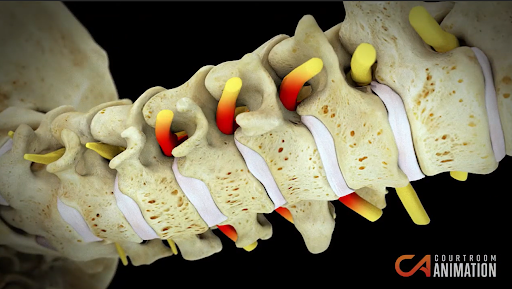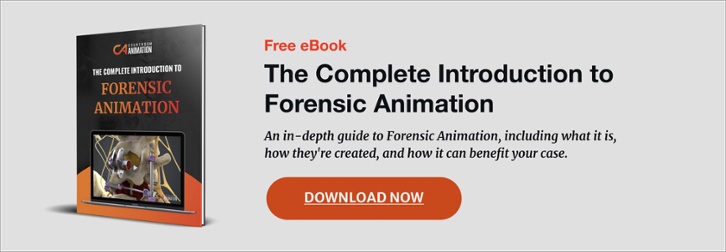
The research and theorizing of the facets of human memory started as early as Aristotle’s treatise, On the Soul. With the growth of civilization, our tools and techniques of discovering how memory works have accelerated. Scientists developed several models based on memory research during the middle to late 1900s. They highlighted new long-term versus short-term memory insights into visuals, such as The Atkinson–Shiffrin model. This particular model proposed that memory consisted of three stores: a sensory register, short-term memory and long-term memory. But what does decades-old research have to do with law graphics and your client’s case?
Memory research has proven that visuals create long-term memories better than someone reading text or listening to a speech. 90% of information transmitted to the brain is visual. This is why trial exhibits, classified as demonstrative evidence, are crucial for an attorney. They highlight the most impactful element(s) of your case, and help the jury retain crucial information.
More and more attorneys are using legal graphics and animations to have a better chance at a favorable outcome. Let’s dive into how they help your audience better recall information.
Human Memory: Visuals vs. Text
What is the difference between long and short-term memory?
“Short-term memory refers to information processed in a short period of time. Long-term memory allows us to store information for long periods of time, including information that can be retrieved consciously or unconsciously.”
The Neuroanatomical, Neurophysiological and Psychological Basis of Memory: Current Models and Their Origins
Describing the complex facets of your case may only allow the jury, or other legal parties, to recall it in their short-term memory. Our brains are hardwired to respond to pictures and motion, so when we perceive an image, it has a better chance of ingraining itself into our long-term memory.
Adding a trial graphic to your presentation, no matter what phase of the legal process you’re in, makes your argument more memorable. Legal graphics help the viewers feel more involved and focused. Litigation graphics are especially helpful to showcase the strength of your case to opposing counsel during settlement discussions.
The main focus of a law graphic is always on the key part of your argument that you want the jury to remember. For example, the legal animation above has highlighted the important parts of the body and complex biological systems involved. If the attorney in this case stated in court that their client required a discectomy, the average juror might not know the word’s meaning and lasting impact on your client, let alone what the procedure entails.
Even an expert witness explaining a discectomy to the jury would likely not be as impactful. As the old saying goes, “A picture is worth a thousand words.”
Download this free checklist to ensure your law graphics are admissible.
If your expert witnesses are describing a complex topic, a visual can clarify their explanations. A jury, or other legal party, that understands the expert witness’s viewpoint is more likely to recall it in the future.
Having no visuals will make it harder to keep the jury or other legal parties’ attention while you or your expert witness speak. They could also forget about your text-filled slide because text has a lower chance of staying in their long-term memory. Overall, a legal graphic is an opportunity for the jury to retain crucial information related to your core argument.
One Legal Illustration is Worth a Thousand Words

With law graphics, you can:
- Simplify the facts in your client’s case to help prove negligence, explain complex ideas, or show why your client is not liable
- Highlight the key facts and nuanced medical concepts involved in medical care
- Supplement your expert’s testimony or deposition
Our eyes can register 36,000 visual messages per hour. It will only help your case if those messages help express liability and damages favorable to your client. If your mediation or trial argument is missing legal graphics, then your case is not as impactful as it could be.
Your Case Is Incomplete Without Law Graphics
The human brain is a complicated organic machine that still has secrets to reveal. However, visuals provide a concrete method for remembering and understanding complex topics. That’s why it’s important for attorneys, both representing the plaintiff and defense, to use law graphics in their trial presentations.
The jury, hungry for visual engagement in the courtroom, will thank you.
Want to learn more about how law graphics can impact your case? Read our Frequently Asked Questions page for more information.

Topics: